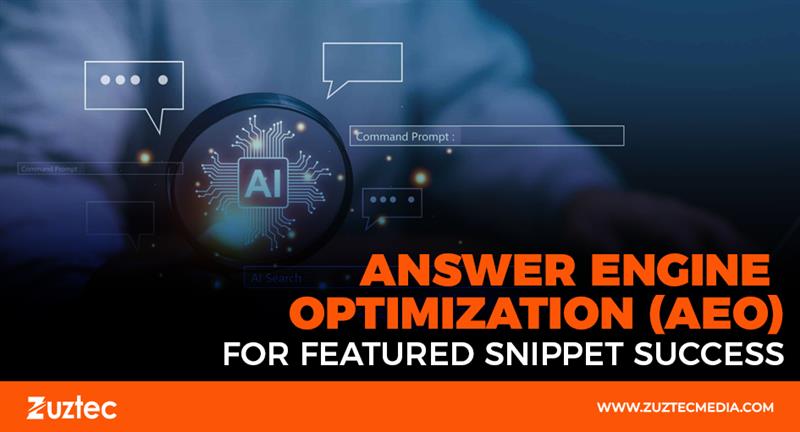
Answer Engine Optimization (AEO) For Featured Snippet Success
Search behavior is evolving rapidly and users today want fast direct answers. Instead of browsing through multiple pages they now expect quick responses from search engines. This shift has led to the rise of featured snippets, voice search and AI assistants that pull information from top sources without needing the user to click a link. To adapt to these changes marketers are turning to answer engine optimization (AEO) as a way to ensure their content gets picked for these instant answers.
While these elements still matter AEO goes a step further. It’s about structuring content so that search engines can easily extract short accurate responses to user questions. By doing this websites increase their chances of appearing in answer boxes which improves visibility and trust.
With AI and voice-based search on the rise optimizing for answers has become more important than ever. When users ask questions through voice assistants they often receive just one result. That result comes from content that is perfectly optimized for AEO. Brands that ignore this opportunity risk being left out of critical search traffic.
In this article we will explore what answer engine optimization involves how it differs from traditional SEO and the best practices you can use to make your content more answer-friendly. Whether you run a blog an ecommerce site or a business website understanding AEO can help you stay ahead in the changing search landscape.
Understanding Answer Engine Optimization (AEO) And Its Role
The process of organizing and presenting data so that search engines can quickly understand it and use it to directly respond to user queries is known as answer engine optimization. This tactic is more concerned with getting particular content featured as a direct response in search snippets or voice results than it is with ranking an entire page.
For example using question and answer formats bullet points or short definitions can improve a page’s ability to show up in Google’s featured snippets. The goal is to make it simple for search engines to grab the answer without confusion.
Another part of AEO involves identifying common questions your audience asks and creating content that addresses those questions in a clear straightforward way. Long-form blog posts can still be effective but within them including direct answers in a few sentences boosts AEO potential.
Key Differences Between Traditional SEO And AEO
While AEO and SEO work together they serve slightly different purposes. Traditional SEO is about helping your website rank higher in search engine results through backlinks technical performance and keyword targeting. AEO focuses more on how specific sections of your content can be selected for instant answers.
One of the main differences is intent. SEO often targets broad phrases or topics aiming to rank for various keywords. AEO is much more focused on user intent in the form of questions like how to why does or what is. This makes the content more conversational and valuable for direct search results.
Another difference is structure. AEO relies heavily on how you organize your content. Using headers lists and tables helps search engines better interpret your content’s relevance for a quick answer. SEO best practices might focus on in-depth content but without the correct structure it may not perform well for AEO.
In one midbody example a website offering gardening tips updated its content to better match common voice search queries. By restructuring the content and applying AEO strategies they saw their featured snippet count grow by 40 percent within weeks.
Best Practices For AEO Content Structure
Creating content that works well for Answer engine optimization (AEO) involves more than just answering questions. It’s also about how you present those answers. Start by identifying the specific queries people ask related to your niche. Use tools like Google’s People Also Ask box or keyword research platforms to discover these common questions.
Next create direct answers for those questions using short paragraphs or bulleted lists. The ideal answer length is around 40 to 50 words for featured snippet consideration. Try to answer the question right after posing it with no fluff in between.
Use proper formatting throughout your content. Headers should clearly separate topics and questions. Include FAQs at the end of your articles to address additional search intent and create more chances to appear in search features.
Conclusion And Future Outlook
Search engines are becoming smarter and users are becoming more impatient. As this trend continues, brands must adopt new strategies like answer engine optimization (AEO) to stay competitive. It’s no longer enough to just rank well. You need to be the answer users see first.
Content built with AEO in mind reaches audiences faster builds trust and improves visibility. By focusing on structure clarity and intent marketers can ensure their websites are prepared for how search continues to evolve.
In the conclusion, a business that recently invested in answer engine optimization AEO saw increased voice traffic and improved visibility in zero-click searches proving the value of this approach.

